上海财经大学英语高数课件02
- 格式:ppt
- 大小:379.00 KB
- 文档页数:42
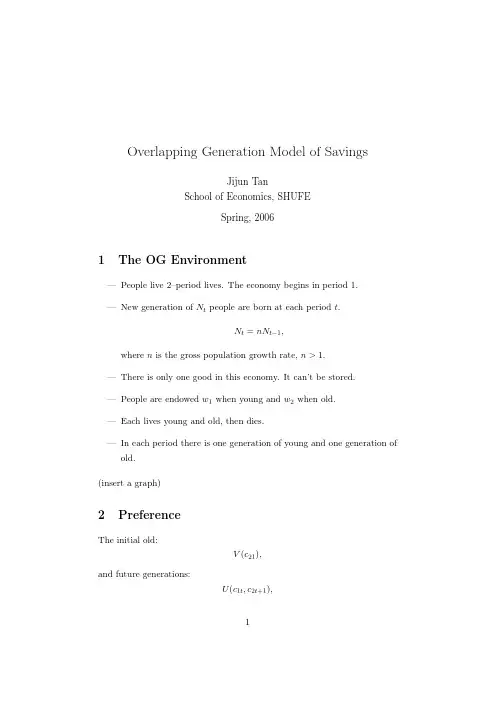


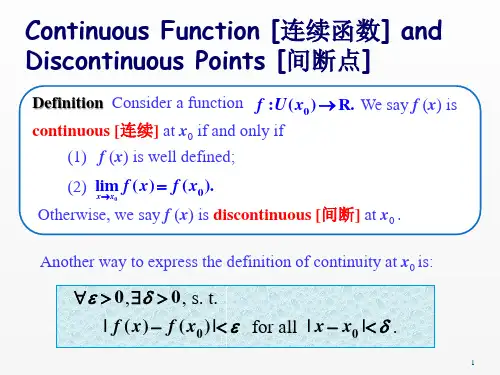


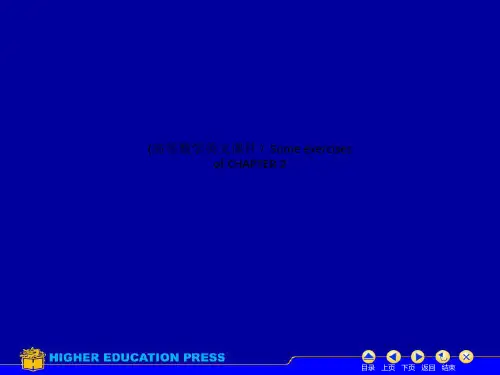
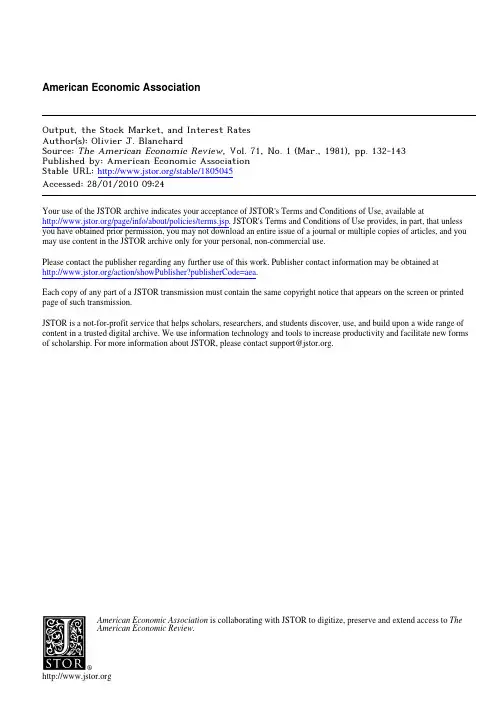
American Economic AssociationOutput, the Stock Market, and Interest RatesAuthor(s): Olivier J. BlanchardSource: The American Economic Review, Vol. 71, No. 1 (Mar., 1981), pp. 132-143Published by: American Economic AssociationStable URL: /stable/1805045Accessed: 28/01/2010 09:24Your use of the JSTOR archive indicates your acceptance of JSTOR's Terms and Conditions of Use, available at/page/info/about/policies/terms.jsp. JSTOR's Terms and Conditions of Use provides, in part, that unless you have obtained prior permission, you may not download an entire issue of a journal or multiple copies of articles, and you may use content in the JSTOR archive only for your personal, non-commercial use.Please contact the publisher regarding any further use of this work. Publisher contact information may be obtained at/action/showPublisher?publisherCode=aea.Each copy of any part of a JSTOR transmission must contain the same copyright notice that appears on the screen or printed page of such transmission.JSTOR is a not-for-profit service that helps scholars, researchers, and students discover, use, and build upon a wide range of content in a trusted digital archive. We use information technology and tools to increase productivity and facilitate new forms of scholarship. For more information about JSTOR, please contact support@.American Economic Association is collaborating with JSTOR to digitize, preserve and extend access to TheAmerican Economic Review.。

I. 中译英:Unit 1: P.16-17 Unit 2: P. 42-43 Unit 3: P. 66 Unit 4: P. 92 Unit 5: P. 115-116 Unit 6: P. 152-153 Unit 7: P. 177-178Unit 11 When she slammed the door and left without a word, their argument ended.2 The guest who attend dinner party feel like slightly surprise at commanding tone of this American.3 Johnny is no longer fear stay at home alone because he has been grown up and mature.4 While all the passengers walk to exit, he stays at seat alone seems like doesn’t want leave airphone.5 This letter must handle to Dr. Wilson himself.6 Even she felt like joining in the argument, Nancy was too shy to dare to open her mouth.7 Do you think when is the most likelihood to find him at home.8 Excitement flash the hunter’s face while he saw a fox emerge from the bushes and run in the direction of the trap he had laid.Unit 21 It was suggested at the meeting that a committee of eleven people be appointed to make new article of association.2 These young scientists obtained primal information what they needed in their researchwork through investigation on-site.3 It is very possible that he will be rejected by the army due to his poor eyesight.4 the members of committee have different opinions as to the best location of the airport.5 Henry’s artworks are superior in many aspects than his brother’s.6 The steady rise in the quality of our products is because improvement of equipment.7 Jim would like to prefer to act on his own point of view, but he didn’t because as a soldier he had to obey the command.8 I will choose latter resolutely if let me to decide whether we should have a city without bicycle or vehicle.Unit 31 She got a job as a cashier at a local bank, but she was soon be fired because of incompetent.2 It is obviously his young assistant who is running the business of book store.3 As the proposal has been announced at the meeting, she stood up and to protest.4 Bill has applied the position of teaching assistantship from Harvard University, but the possibility he got it is very little.5 Due to lack of funds, they are trying to attract foreign capital.6 The has smell of musty, it must have been vacant for a long time.7 In terms of hobbies are concerned, she and her sister have little in common.8 It is self-evident that the education of teenager is great importance to the future of a country.Unit 41 That litter girl running too fast that get out of control her balance and fell over.2 I was impressed by his devotion to research, but I did not have the slightest interest in his profound theories.3 Be sure not to say anything capable of being misunderstand.4 I was confused by their conflicting advice that I didn’t know how to act.5 At first the complicated problem frustrated them, but after considering carefully they finally worked out a solution.6 The commander of sports delegation beamed with delight with a young pioneer presented him with a bunch of flowers.7 I really don’t see why our English teacher single praise our monitor since we all done quite well this semester.8 I believe the theory that higher form of animals evolves from lower ones.Unit 51 If the wealthy company spend more money on green energy industry instead of on build up military machines and unclear weapons, many of current pollution problems would gradually disappear.2 When burning the coal not only consume the oxygen in the house but also throw off poisonous gases.3 Apparently, find out alternative energy is crucial for stable development of economy.4 Solar cells can absorb sunlight and convert into electricity.5 If the temperature on the earth to go rise from year to year, the polar ice caps will begin to melt then half of the buildings in coastal cities will disappear beneath splashing sea waves.6 Because these creatures are microscopic and tend to hide beneath leafy plants, are not always visible to the naked eyes.7 As a result of invasion to atomic radiation, he finally collapsed at work.8 There is distinct evidence of connection between high pressure of work and some disease of the body.Unit 61 As long as you keep trying, you will be able to solve this complicate problem latter.2 We anticipate that we will encounter resistance to our plan.3 Jim’s friends said that the noise pollution is very serious in their city, but they ha d to endure it.4 At first Tom thought that with his knowledge, skill and experience he was bound to find a satisfactory job.5 It would be advisable to handle this delicate problem with calmness and patience.6 Dick thought if he couldn’t take machine apart, no workers in other factory could, either.7 Do you think bus driver should take full responsibility for the passenger’s safety?8 You don’t need to dwell on your mistakes in judgment any more, what’s important is to try your best to avoid repeating them.Unit 71 Under the leadership of the local government, the villager rose to the serious food crisis caused by the floods.2 This exhibition is very popular and is attracting the steady stream of visitors3 When Mom came upstairs to check us kids, I turned over and pretended to be asleep.4 To fight with drug traffickers is a challenge to Armstead, she felt rather nervous, but she decided to confront them.5 The old lady told me to be cautious and not talk with the guy who hanging out on the street corner.6 A health organization prompted the local government to raise three-billion-dollar fund for construct new hospital.7 When open the door, the man who had set fire to the church found himself confronted bya dozen policemen with guns.8 It is reported that fire which raged for more than two hours started in an abandoned warehouse.。
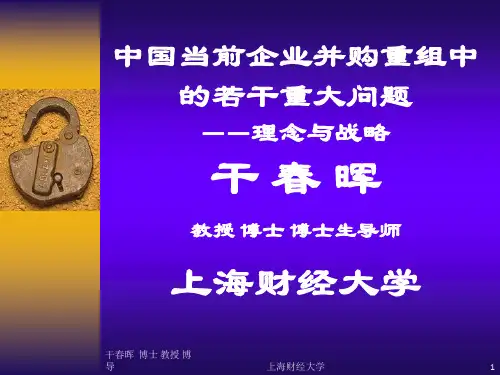
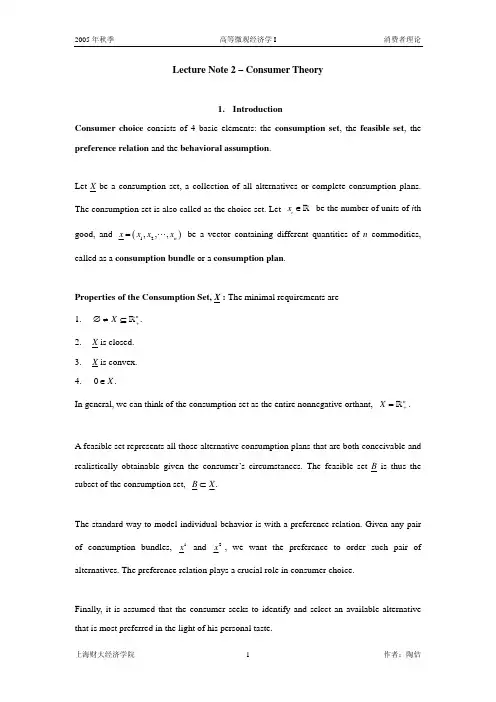
J Gastroenterol 2008; 43:609–617DOI 10.1007/s00535-008-2209-2Long-term effects of lipase inhibition by orlistat on gastric emptying and orocecal transit time of a solid mealP IOTR K OCEŁAK1, B ARBARA Z AHORSKA-M ARKIEWICZ1, K RZYSZTOF J ONDERKO2,M AGDALENA O LSZANECKA-G LINIANOWICZ1, A GNIESZKA Z˙AK-G OŁAB1, M ICHAŁ H OLECKI1, M AGDALENA K AMIN´SKA2,and M AŁGORZATA S ZYMSZAL21Department of Pathophysiology, Medical University of Silesia, 18 Medyków Street, Katowice 40-752, Poland 2Department of Basic Biomedical Science, Medical University of Silesia, Katowice, PolandBackground. We assessed the impact of a prolongedlipase inhibition upon gastric emptying (GE) and oroce-cal transit time (OCTT) of a 355-kcal low-fat solid meal. Methods. In double-blind manner, 40 obese women BMI > 30 kg/m2, randomly allocated into two equal groups, took orally t.i.d. 120 mg orlistat or placebo during 8 weeks of a weight-reducing management. At randomization and after 2 months, GE was measured simultaneously with OCTT by means of a 13C-octanoic acid and a hydrogen breath test, respectively. Lipolytic activity was evaluated with a 13C-mixed triglyceride breath test (13C-MTGBT). Results. A profound lipase inhibition by orlistat was confi rmed by a 79.5% ± 16.9% reduction of the cumulative 6-h 13C recovery with 13C-MTGBT. GE remained unchanged either in the orlistat (T1/2, 188 ± 35 min start versus 198 ± 36 min end) or theplacebo (T1/2, 191 ± 35 min start versus 180 ± 39 min end) group. OCTT increased from 208 ± 54 min to 271 ± 64 min (P< 0.01) after orlistat treatment and did not change signifi cantly (216 ± 76 vs. 234 ± 72 min) in the placebo group. Conclusions. No adverse effect on the GE and a moderate prolongation of the OCTT of a low-fat solid meal is to be expected under a prolonged treatment with orlistat at a typical dosage regimen.Key words: obesity, gastric emptying, lipase activity, orlistat, orocecal transit timeIntroductionThe currently available arsenal of drugs dedicated for pharmacological support of weight-reducing therapy is surprisingly modest. It comprises essentially two cate-gories of antiobesity drugs: those that act on the gastro-intestinal system and those which affect the central nervous system to primarily suppress appetite. A repre-sentative of the former group, orlistat, is a potent inhibi-tor of the gastric and pancreatic lipase, thereby eliciting a decrease in the hydrolysis of ingested triglycerides.1 Consequently, it brings about a dose-dependent reduc-tion in dietary fat absorption. The drug is suitable for long-term therapy,2 but patients may have, occasionally, to reckon with gastrointestinal side effects among which steatorrhea and the urge to defecate would be rated the most troublesome.A decrease in intrajejunal lipase activity by orlistat, leading to a diminished availability of free fatty acids within the lumen of the digestive tract, would ultimately contribute to a blunted cholecystokinin release.3,4 The latter disorder would in turn affect post-prandial gastrointestinal motility, evoking a pattern of motor activity changes within the antrum, pylorus, and duodenum, promoting an enhanced gastric evacuation.5 Published studies on the effect of orlistat on gastric emptying kinetics not only are scarce but also indicate discordant results. On the one hand, studies involving a single-dose administration or short-term orlistat treat-ment in normal-weight healthy subjects or overweight diabetic patients point to speeding up of either liquid or solid phase of gastric emptying.3,6,7 On the other hand, among two studies conducted in obese patients subjected to long-term orlistat treatment, one reports an acceleration of gastric emptying of liquid fat-rich meal after the drug,8 whereas in the other orlistat did not have any infl uence on gastric emptying of a solid test meal.9 Moreover, no report is available so far as concerns the effect of orlistat on orocecal transit time.Therefore, the aim of the current study was to assess the influence of orlistat-induced lipase inhibition on gastric emptying and the orocecal transit time of solid food in patients entering a double-blind, placebo-Received: February 20, 2008 / Accepted: April 24, 2008 Reprint requests to: P. Kocełakcontrolled study, at the time of randomization and after 2 months of weight-reducing treatment.Patients and MethodsPatients and study protocolAccording to a prospective study design each of the two research blocks was designed to be manned by 20 subjects. Female subjects fulfi lling a basic criterion of having simple obesity BMI > 30 kg/m2 without any concomitant diseases were enrolled into the study. Specifically, every patient was carefully interviewed to exclude pregnancy, lactation, presence of symptoms suggestive of functional disorders of gastrointestinal motility, cholelithiasis, pancreatic disease, diabetes, use of any medication except for oral contraception, a history of bariatric procedures or any other abdo-minal surgery affecting the anatomical integrity of the digestive tract, except for appendectomy. The study was conducted in accordance with the Helsinki Declaration, and every volunteer gave written con-sent to participate after having been made familiar with the aim, protocol, and methodology of the study. The research project was approved by the Bioethics Committee of the Medical University of Silesia.At startup, every subject underwent a basic evalua-tion comprising the establishment of body mass, body fat content, and biochemical parameters (blood glucose, cholesterol, triglycerides, insulin). Moreover, on one day a measurement of solid-phase gastric emp-tying with a 13C-octanoic acid breath test was pursued simultaneously with the measurement of the orocecal transit time by means of a hydrogen breath test, and on another day intrajejunal lipolytic activity was assessed with a 13C-mixed triglyceride breath test. The two examination sessions were separated by 48 to 72 h.After completion of the introductory examinations set, the patients were randomly allocated according to a double-blind study protocol to two treatment groups: one receiving orlistat capsules (Xenical; F. Hoffman-La Roche, Basel, Switzerland) 120 mg p.o. three times daily, the other receiving identical appearing placebo capsules, also three times daily. During 8 weeks of the pharmacological treatment, both groups received in addition an identical weight-reducing program consist-ing of (i) a 1200 kcal/day, fat-restricted balanced diet, (ii) increased physical exercise, and (iii) advice on behavioral modifi cations. At the termination of the 8-week treatment, the patients from either group under-went again the same set of examinations as at the startup.Information on gastrointestinal side effects was col-lected by an interview during control visits of the patients in the outpatient clinic, which were scheduled every 2 weeks during the study period.Determination of the body fat content andlaboratory proceduresBody composition was determined with a bioimpedance technique using the Bodystat analyzer (Bodystat Doubles, Isle of Man, UK).A 6–8 ml sample of venous blood was collected in the morning, after an overnight fast. After clot formation, the samples were centrifuged (1000 g) at room tempera-ture for 10 min. The obtained serum was drawn into plastic vials and stored at −80°C until the time of assay.Plasma glucose, cholesterol, high-density lipoprotein (HDL) cholesterol, and triglycerides were determined by enzymatic procedures using commercially available test kits (Cholesterol FS, Triglycerides FS, HDL FS; Dia SyS, Holzheim, Germany). Low-density lipoprotein (LDL) cholesterol was calculated using the Friedwald formula.10Insulin was determined by a radioimmunoassay (Coat-A-Count Insulin; DPC Diagnostic Products, Los Angeles, CA, USA) with a sensitivity limit of 1.2 μIU/ ml and intra- and interassay coeffi cients of variations of 5.2% and 5.8%, respectively. The insulin resistance index (HOMA-IR) was calculated according to the formula published by Haffner et al.1113CO2and H2breath testsThe procedures were performed on subjects reporting to the laboratory in the morning, after a 12-h overnight fast. After a 15-min rest in a sitting position allowed for a stabilization of the metabolism, a basal probe of exhaled air was collected into an aluminum-covered plastic bag of about 1-l capacity (Fisher Analysen Instrumente, Leipzig, Germany). Then, at the time point designated “0,” the subjects were offered one of two test meals designated for the measurement of the following parameters:A.G astric emptying of solid foods concomitantly withthe orocecal transit time: a pancake (355 kcal; 15.5 g proteins, 16.8 g fat, and 43.0 g carbohydrates, providing 16.1%, 39.3%, and 44.7% of the total energy content, respectively) was made of two eggs,30 g wheat flour, and 0.1 g baking powder, spreadbefore serving with 50 g strawberry jam12,13; a drink of 200 ml mineral water was allowed to facilitate eating. During the preparation procedure 75 μL(68 mg) 13C-octanoic acid (INC610P; Euriso-Top,Saint-Aubin, France) was fi rst added to the raw egg yolks, then 10 g lactulose (66.7% syrup Normase;Molteni Pharmaceutici, Italy) was mixed into the raw pancake dough.13,14B.I ntrajejunal lipolytic activity: a test breakfast(349 kcal; 4.1 g protein, 30.9 g fat, and 24.0 g carbo-hydrates) consisting of 50 g white bread spread with30 g butter into which 300 mg 13C-MTG (INC650P;Euriso-Top) was added.15Orlistat 120 mg or placebo was taken with the test meals, applied for the performance of the breath tests assessing the gastric emptying/orocecal transit time or the intrajejunal lipolysis; the time needed to eat the meals ranged between 5 and 8 min. After ingestion of the pancake, 26 probes of the expiratory air were col-lected postprandially: every 10 min during the fi rst hour, and subsequently every 15 min for another 5 h. After ingestion of the 13C-MTG test meal, expiratory breath samples were collected at 30-min intervals for 6 h. The patients were asked not to take any additional food or drink for the whole observation period. They were enabled to rest sitting in a comfortably furnished room.13CO2measurementThe 13CO2content in the expiratory breath samples were determined by means of nondispersive isotope-selective infrared spectrometry (IRIS apparatus; Wagner Analysen Technik Vertriebs, Bremen, Germany;a model equipped with 16 ports for simultaneous mount-ing of bags with air samples was used).Gastric emptying kineticsUsing algorithms of nonlinear regression implemented in the Statistica 6.1 software,16 the derived curves of the momentary 13C recovery were fi tted to the function:D%i_13C(t) = at b e−c t, where t stands for time, and a, b, c are parameters of the function, whichenabled computation of the parameters describingthe gastric emptying kinetics:17(1) the lag phase, T_Lag = b/c(2) t he gastric half-emptying time, T½ = gamma inv.(0.5; b + 1; 1/c),(3) the gastric emptying coeffi cient, GEC = ln(a) Goodness of fit of either function was checked by computation of the coeffi cient of determination, R2.18 Orocecal transit time of the solid mealThe H2concentrations in the expiratory breath samples were measured with a dedicated chromatograph (Micro-lyzer Model DP; QuinTron Instrument, Milwaukee, WI, USA). The time elapsing between the start of a meal intake and the fi rst occurrence of a sustained, i.e., present at four consecutive time points, increase in H2 concentration of at least 5 ppm over baseline was taken as the measure of orocecal transit time.19Intrajejunal lipolytic activityThe following parameters were taken as quantitative indices of the intrajejunal lipolytic activity: the maximummomentary 13C recovery (Dmax) and the time at which itoccurred (Tmax), as well as the cumulative 6-h 13C recov-ery (AUC).20Statistical analysisWithin-group comparisons were accomplished with the Wilcoxon signed-rank test, whereas the Mann–Whitney U test was used for between-group comparisons.18 Statistical significance was set at the P< 0.05 level, two-tailed. Results are presented as means ± SD. All statistical analyses were performed with the use of the Statistica 6.1 software (license abdb409a903816ar).16ResultsCompliance with the study protocolTwenty-four patients were assigned to the placebo branch. Of them, 3 subjects resigned during the treat-ment period and 1 subject did not appear for the post-treatment checkup. The orlistat branch comprised initially 28 patients. Four patients resigned during the treatment period, 2 did not appear for the post-treatment examinations, and in another 2 patients the post-treatment checkup was incomplete because of technical problems. Ultimately, apart from those drop-outs, complete data from 20 patients were collected for analysis either in the placebo or the orlistat group. As shown in Table 1, the characteristics of the two groups appeared to be entirely comparable.Side effects comprising typically loose stools and increased frequency of defecation were reported by 15 patients in the orlistat group. Similar gastrointestinal complaints were reported also by 8 patients from the placebo group. Those adverse effects tended to resolve with elapsing time of the management.Effi ciency of the weight-reducing therapyAfter 8 weeks, the orlistat-treated patients lost a mean of 9.2 ± 4.1 kg (9.0% ± 3.2% of initial weight). More-over, a decrease in body fat mass (absolute and percent-age) was observed with a concomitant increase in the percentage of free fat mass (Table 2).The placebo-treated patients lost, after 8 weeks, a mean of 5.8 ± 3.2 kg (5.9% ± 3.2% of initial weight). Similar trends as outlined above pertained in this group with regard to the changes in the body fat mass and the percentage of free fat mass (Table 2).Respective between-group comparisons revealed that the orlistat-assisted weight-reducing regimen was statis-tically significantly more effective when compared to the placebo effect (Table 2).Effect of the weight-reducing therapy onbiochemical parametersEight weeks of the orlistat-assisted therapy resulted in signifi cant reduction of the proatherogenic biochemical parameters. Moreover, after 8 weeks of a weight-reducing regimen supported pharmacologically with orlistat, a signifi cant decrease in insulinemia and insulin resistance index were found (Table 3). No such effects were observed in the placebo-treated group (Table 3).Gastric emptying and orocecal transit of solid foodNo statistically significant shifts in solid-phase gastricemptying were found in either group (Table 4). It is noteworthy, taking into account the net changes in the T_lag and the T1/2, that a negligible trend toward a slowing of gastric emptying would be inferred in the orlistat-treated group and a very small speeding up of gastric evacuation in the placebo group; the differences between the net changes in the T_Lagand the T1/2appeared to be statistically signifi cant (Table 4).When compared to the pretreatment situation, a signifi cantly delayed orocecal transit time of the solid phase of the test meal was observed after 8 weeks in orlistat-treated patients (Table 4). In the group receiv-ing placebo, an unsubstantial, and statistically not sig-nificant, tendency toward augmentation of orocecal transit time was noted (Table 4). Comparison of the net changes in orocecal transit time between the two study groups did not reveal a statistically signifi cant difference (P= 0.095). There was no signifi cant change in the basalH2concentration at the end of the treatment in bothparative characteristics of the two study groupsOrlistat (n= 20)Placebo(n= 20)Signifi cance ofdifferenceAge (years) 28.2 ±6.3 28.8 ± 7.2P= 0.97, NSBody mass (kg)100.5 ± 19.2101.8 ± 18.2P= 0.76, NSBMI (kg·m−2) 37.7 ±7.4 36.6 ± 5.6P= 0.97, NSHeight (cm)163.5 ± 3.9166.5 ± 6.5P= 0.12, NSBody fat (%) 53.4 ±7.5 50.9 ± 5.0P= 0.35, NSBody fat (kg) 54.5 ±16.3 52.4 ± 13.4P= 0.80, NSFat free mass (%) 46.6 ±7.5 49.1 ± 5.0P= 0.35, NSFat free mass (kg) 46.0 ±7.4 49.4 ± 7.0P= 0.13, NSBMI, body mass index; NS, not signifi cantTable2. Effi ciency of 8 weeks of a weight-reducing therapy in the two study groupsOrlistat group Placebo groupBefore treatmentAftertreatmentΔBeforetreatmentAftertreatmentΔBody mass (kg)100.5 ± 19.291.3 ± 16.9***−9.2 ± 4.1##101.8 ± 18.296.0 ± 18.7***−5.8 ± 3.2 BMI (kg/m2) 37.7 ± 7.433.9 ± 6.5***−3.8 ± 1.9## 36.6 ± 5.634.5 ± 5.7***−2.1 ± 1.1 Body fat (%) 53.4 ± 7.545.3 ± 7.0**−8.1 ± 6.7# 50.9 ± 5.047.7 ± 6.8**−3.2 ± 4.5 Body fat (kg) 54.5 ± 16.342.2 ± 3.4***−12.3 ± 6.7### 52.4 ± 13.446.6 ± 14.3***−5.8 ± 4.3 Free fat mass (%) 46.6 ± 7.554.7 ±7.0*** 8.1 ± 6.7# 49.1 ± 5.052.3 ± 6.8** 3.2 ± 4.5 Free fat mass (kg) 46.0 ± 7.449.1 ±5.4 3.1 ± 6.6# 49.4 ± 7.049.4 ± 6.70.0 ± 4.1Δ, net difference after the treatment relative to the basal situationStatistical signifi cance of differences: **P< 0.01, ***P< 0.001, before vs. after a treatment; #P < 0.05, ##P< 0.01, ###P< 0.001 for comparisons of the orlistat vs. the placebo groupTable3.Effect of 8 weeks of a weight-reducing therapy in the two study groups on biochemical parametersOrlistat PlaceboBefore treatmentAftertreatmentΔBeforetreatmentAftertreatmentΔCholesterol (mg/dl)187.8 ± 33.9170.0 ± 26.0**−17.8 ± 20.4181.8 ± 26.2176.4 ± 23.7−5.4 ± 18.6 HDL cholesterol (mg/dl) 49.6 ± 9.944.2 ± 7.19*−5.4 ± 8.647.1 ± 10.945.5 ± 10.1−1.6 ± 12.3 LDL cholesterol (mg/dl)118.7 ± 28.78107.1 ± 22.8*−11.6 ± 20.8115.5 ± 23.1109.1 ± 22.7−6.4 ± 22.4 Triglycerides (mg/dl) 96.7 ± 34.793.3 ± 41.29−3.4 ± 30.396.1 ± 36.1107.0 ± 33.510.9 ± 33.4 Glucose (mg/dl) 90.2 ± 8.891.1 ±7.8 0.9 ± 9.894.7 ± 4.292.7 ± 5.4−2.0 ± 6.4 Insulin (μg/dl) 10.1 ±5.3 7.7 ± 3.6*−2.4 ± 4.4# 9.8 ±3.0 9.8 ± 2.30.0 ± 4.1 HOMA-IR 2.5 ±1.6 1.6 ± 1.0*−0.9 ± 1.7# 2.3 ±0.8 2.2 ± 0.6−0.1 ± 1.0Δ, net difference after the treatment relative to the basal situation; HOMA-IR, insulin resistance indexStatistical signifi cance of differences: *P< 0.05, **P< 0.001, before vs. after a treatment; #P< 0.05 for comparisons of the orlistat vs. the placebo groupTable4.Solid-phase gastric emptying and orocecal transit time before and after 8 weeks of a weight-reducing therapy in the two study groupsOrlistat PlaceboBefore treatment After treatmentΔBefore treatment After treatmentΔT_Lag (min)138 ± 26144 ± 22 6 ± 19#138 ± 25132 ± 28−6 ± 29T1/2 (min)188 ± 35198 ± 36 10 ± 37#191 ± 35180 ± 39−11 ± 29GEC 3.3 ± 0.5 3.3 ± 0.30.0 ± 0.4 3.1 ± 0.4 3.1 ± 0.4 0.0 ± 0.4 OCTT (min)208 ± 54271 ± 64** 63 ± 65216 ± 76234 ± 7218 ± 72Δ, net difference after the treatment relative to the basal situation; T_Lag, lag phase; T1/2= gastric half-emptying time; GEC, gastric emptyingcoeffi cient; OCTT, orocecal transit timeStatistical signifi cance of differences: **P< 0.01, before vs. after a treatment; #P< 0.05 for comparisons of the orlistat vs. the placebo groupgroups (placebo group, 5.5 ± 1.9 ppm before vs. 7.8 ±1.8 ppm after; orlistat group, 5.4 ± 1.3 ppm before vs.7.1 ± 1.5 ppm after). Eight weeks of the weight-reducing management brought about, in both groups, a decrease in the maximum net H2rise in breath air after intake of the lactulose-containing pancake; the decrease mentioned was, however, statistically signifi cant in the placebo-treated group only: placebo group: 28.1 ±4.6 ppm before versus 19.5 ± 3.3 ppm after, P= 0.036; orlistat group, 36.9 ± 5.7 ppm before versus 25.9 ±4.3 ppm after, P= 0.074.Intrajejunal lipolytic activityIn accordance with its pharmacodynamic properties, orlistat elicited a profound decrease in the intrajejunal lipolytic activity, whereas no such effect was observed after the placebo (Table 5). When compared to the pretreatment situation, the cumulative 6-h 13C recovery in breath air diminished by 79.5% ± 16.9% in the orlistat group. In the placebo group at the end of the 8 week weight-reducing management, a slight (12.2% ± 31.8%) and statistically not signifi cant decrease in 6-h 13C recov-ery was noted.DiscussionThe results obtained prove the effi cacy of orlistat when added to a weight-reducing treatment consisting of an energy- and fat-restricted diet, increased physical activity, and behavioral modifi cations, as was previously demonstrated in studies on orlistat management in obese subjects without concomitant diseases21 and in obese subjects with type 2 diabetes22 and dyslipidemia.23 Moreover, as was reported previously by others, it seems that orlistat helps to prevent a loss of the fat-free body mass.24Biochemical sequelae of the pharmacological inter-vention with orlistat comprised a statistically signifi cant decrease in total serum cholesterol, HDL cholesterol, and LDL cholesterol concentrations in orlistat-treated patients. Also, in previous studies, a reduction of total serum cholesterol and LDL cholesterol concentration was reported either in patients with risk factors of car-diovascular disease,23–26 or in obese subjects without concomitant diseases.27 Finally, a greater weight loss in the orlistat-treated patients may have accounted for a significant decrease in the serum concentrations of insulin, although Tiikkainen et al.27 observed a decreasein insulinemia in both orlistat- and placebo-treatedpatients.The items discussed above are undoubtedly impor-tant from the point of view of the cardinal goals of an obesity treatment, which comprise (i) weight reduction, (ii) maintenance of a reduced body mass, and, the most vital, (iii) reduction of a risk of diseases accompanying obesity.2 Nevertheless, the essential goal of our study was the assessment of effect of orlistat-induced lipase inhibition in obese patients undergoing a prolonged orlistat-assisted weight-reducing management on gastric emptying and orocecal transit time of solid food. For that purpose, we chose noninvasive methods of exami-nation so as to avoid any interference with normal physiology of the digestive tract. The two methods applied, the 13C-octanoic breath test for the gastric emp-tying of solids, and the lactulose hydrogen breath test for the orocecal transit time, are well established and currently widely used methodological approaches. In our laboratory we provided proof of reproducibility of those methods.12,19,28 Taking into account data derived from repeat examinations separated by a 2- to 3-week time gap, the 13C-octanoic breath test is capable of detecting a 14-min difference in T_Lag and a 11-min difference in T1/2of a solid caloric test meal with 20 paired studies at the P= 0.05 level, two-tailed.12 With a 10-g lactulose dose incorporated into the solid meal anda 5-ppm expected H2increment over the baseline, a difference in the orocecal transit time of 22 min would be detected with a hydrogen breath test in a trial involv-ing 20 paired examinations separated by a median period of 32 days.28 In addition, a proof of the sensitivity and reproducibility of the 13C-MTG breath test used in the current study for the evaluation of the intrajejunal lipolytic activity has been provided.29When commenting on the results obtained with respect to gastric emptying kinetics, one should recall herein results of “classical” studies involving acute administration of orlistat to subjects. Under such a cir-cumstance, the gastric emptying of solid or liquid hap-pened to be accelerated,3,6,7 an effect that would be ascribed to a withdrawal of a strong retarding factor among the interacting regulators of gastric evacuation speed, namely, cholecystokinin (CCK).5 In the current study, a profound orlistat-elicited suppression of the intrajejunal lipase activity, confirmed by an average 80% decrease in the 6-h cumulative recovery of 13C with the 13C-MTG breath test, was observed. Formerly, a similar fi nding on the effect of orlistat on the result of a 13C-MTG breath test pursued in rats was described by Kalivianakis et al.30 Thus, proof of the orlistat effi ciency in suppressing intrajejunal lipolysis was obtained. It should be noted here that such profound degree of sup-pression is attainable with a solid meal, whereas liquid lipid emulsions would be likely to partially escape the effects of orlistat on lipase activity.31Despite the evident inhibition of lipolysis, we did not observe a signifi cant shift in the gastric emptying param-eters. It should be pointed out here that we chose a balanced low-calorie test meal with a moderate fat content (16.8 g, accounting, however, for 44.7% of the total energy content), taking into account the dietary recommendations that are usually provided to patients undergoing weight-reducing management supported pharmacologically with orlistat; namely, the patients are advised to follow a mildly hypocaloric diet, with a fat content of less than 30%.1 Moreover, the daily fat intake should be distributed among main meals taken through-out the day, so as to avoid or at least minimize the risk of gastrointestinal side effects involved in the pharma-codynamic actions of orlistat. Therefore, in a real-life situation, patients subjected to orlistat treatment would rather avoid high-fat meals such as those applied in acute experiments examining the sequelae of profound lipase inhibition on gastrointestinal functions. Accord-ingly, one may argue that the formerly described enhancing effect of orlistat on gastric emptying3,6,7,32 may have been accounted for by remarkably ample fat loads delivered with the test meals studied.Our result with regard to the gastric emptying kinet-ics is in agreement with the recent study of Mathus-Vliegen et al.,9 who evaluated liquid- and solid-phaseTable5.Indices of the intrajejunal lipolytic activity before and after 8 weeks of a weight-reducing therapy in the two study groupsOrlistat PlaceboBefore treatment After treatmentΔBefore treatment After treatmentΔDmax (dose%/h) 9.0 ± 2.0 2.2 ± 1.2***−6.8 ± 2.1### 8.7 ± 1.57.9 ± 3.3−0.8 ± 3.4Tmax (minutes) 288 ± 58180 ± 77** −108 ± 105## 262 ± 80 246 ± 76 −16 ± 95AUC (%dose)30.0 ± 10.0 5.7 ± 4.4***−24.3 ± 0.3###26.5 ± 6.823.1 ± 9.0−3.4 ± 8.1Δ, net difference after the treatment relative to the basal situation; D max, maximum momentary 13C recovery; T max, the time at which it occurred; AUC, cumulative 6-h 13C recovery in breath airStatistical signifi cance of differences: **P< 0.01, ***P< 0.001, before vs. after a treatment; ##P< 0.01, ###P< 0.001 for comparisons of the orli-stat vs. the placebo groupgastric emptying with the use of dynamic scintigraphy in patients undergoing a long-term treatment with orli-stat. The test meal applied in their study was basically quite similar to ours: a pancake covered with butter and jam or sugar plus 150 ml of 10% glucose drink (630 kcal, 15 g protein, 75 g carbohydrates, 30 g fat), whereas our pancake was less energetic (355 kcal) and was served with an acaloric drink. Similarly to our current fi ndings, the authors quoted observed a lack of a signifi cant shift in the gastric emptying of solids after 1 month and 1 year of orlistat therapy. When trying to explain that rather unexpected fi nding, they suggested that it would be necessary to measure the gastrointestinal transit time so as to establish the existence of opposing infl uences of lipase inhibition, such as acceleration of gastric emptying through a decreased CCK release on the one hand, and an activation of the ileal and colonic brake by unabsorbed fats leading to a delayed gastric empty-ing on the other.9,33The current study is, to the best of our knowledge, the fi rst wherein the effect of orlistat on orocecal transit time was evaluated. Following a recipe recently elabo-rated in our laboratory,13,14 we incorporated lactulose in the solid phase of the test meal, which maneuver enabled us to simultaneously examine gastric emptying and orocecal transit time with a 13CO2breath test and the hydrogen breath test, respectively.The finding of significantly delayed orocecal transit time of the solid phase of the test meal observed after 8 weeks in orlistat-treated patients requires consider-ation of several factors and circumstances that may have had influenced the measurement. Although the phase of the menstrual cycle does not affect gastric empty-ing,34–36 some published data indicate that orocecal transit time may be prolonged during the luteal phase of the menstrual cycle,37 although other reports deny any effect of the menstrual cycle on length of orocecal transit time.38,39 On the basis of recorded dates of menses and menstrual cycle lengths of the patients studied, we established that 11 of 20 (55%) subjects in the orlistat group, and 8 of 20 (40%) subjects in the placebo group, were examined on both occasions during the same phase of their menstrual cycle. Taking into account the paper by Wald et al.37 as potentially relevant, as concerns observation of prolonged orocecal transit time at the end of our study, might be a pattern where a basal mea-surement had been taken during the follicular/ovular phase and the closing measurement had been accom-plished during the luteal phase. The pattern mentioned occurred, however, in as few as 4 patients of the placebo group and 2 patients of the orlistat group. Therefore, the effect of menstrual cycle on our results concerning orocecal transit time can be ruled out.As a consequence of the pharmacological action of orlistat, the bulk of unbroken triglycerides, unabsorbed within the jejunum/ileum, would be transferred to thelarge intestine. A question therefore arises if under such a circumstance an altered bacterial metabolism could have affected the results of the hydrogen breath test applied in our study for measurement of orocecal transit time. Respective comparisons of the basal concentra-tions and maximum net increments in breath H2per-mitted us, however, to state that decreased bacterial metabolism could not have accounted for the observed prolongation of the orocecal transit time in the orlistat-treated group. However, the diminished amplitude ofbreath H2rise observed in both groups may have resulted from the adherence to diet restriction and mod-ifi cation advice provided to the patients as a constituent of the weight-reducing management.Another point requiring consideration is whether only the weight reduction and an inherent switch to a catabolic condition could have affected gastric empty-ing and orocecal transit time in our patients. A rationale for posing this question is provided by literature data demonstrating delayed gastric emptying40–42 and retarded orocecal transit time43,44 in patients suffering from anorexia nervosa, a pathophysiological model of an undoubtedly profound catabolic condition. Neverthe-less, the fact that in this study a statistically signifi cant prolongation of orocecal transit time was found on the orlistat- but not in placebo-treated patients permits dis-carding such an explanation.A pathophysiological condition wherein delayed oro-cecal transit time could be attributed to an augmented load of fat burdening the distal ileum and the large intestine was described by Bali et al.45 in patients with cystic fibrosis. Taking into account the observation quoted, as well as the essence of the pharmacodynamic action of orlistat, the results of our study speak in favor of the role of the ileal and colonic brake in counter-balancing the effect on gastric evacuation knowledge-ably elicited by orlistat via the CCK route. Peptide YY (PYY) or glucagon-like peptide-1 (GLP-1) can be hypothesized as candidate hormonal executive messen-gers thereof, because both are released by the presence of fat products from enteroendocrine cells localized within the distal ileum and colon and are known to exert a delaying effect on gastric emptying and intesti-nal transit.46–50 Admittedly, we did not measure the plasma PYY or GLP-1 levels in our patients, and there-fore we cannot provide a proof of this supposition, which remains to be established in future research. Nevertheless, apart from the hypothesis outlined, a conclusion of clinical signifi cance can be inferred from this study, namely, that no adverse effect on gastric emptying and moderate prolongation of the orocecal transit time of a low-fat solid meal is to be expected under prolonged treatment with orlistat at a typical dosage regimen.。
上海财经大学法律英语教材I. IntroductionThe Shanghai University of Finance and Economics (SHUFE) Law English Textbook is designed to provide students with a comprehensive understanding of legal concepts and terminology in the English language. With a focus on the intersection of law and economics, this textbook aims to equip students with the necessary language skills to succeed in the field of law. The following sections will outline the key features and contents of this textbook.II. Course Overview1. Legal Systems and Principles- Introduction to Legal Systems- Common Law vs. Civil Law Systems- Principles of Law: Equity, Justice, and Fairness2. Contract Law- Essential Elements of a Contract- Formation and Termination of Contracts- Types of Contracts: Sales, Employment, and Lease Agreements3. Tort Law- Negligence and Duty of Care- Types of Torts: Intentional, Strict Liability, and Nuisance- Tort Reform and Case Studies4. Company Law- Corporate Structure and Governance- Shareholders' Rights and Responsibilities- Mergers and Acquisitions5. Intellectual Property Law- Copyright, Trademark, and Patent Law- Protection of Intellectual Property Rights- Intellectual Property Infringement and Enforcement 6. International Law- Public International Law and Treaties- International Human Rights Law- Dispute Resolution: Arbitration and Mediation7. Legal English Writing and Research Skills- Legal Research Methods and Resources- Drafting Legal Documents and Contracts- Legal Writing Techniques and StyleIII. Key Features of the Textbook1. Bilingual Approach- The textbook presents legal concepts and terminology in both English and Chinese, catering to the needs of bilingual students.2. Practical Examples and Case Studies- Real-life examples and case studies are included to enhance students' understanding of legal concepts and their practical application.3. Glossary of Legal Terms- A comprehensive glossary is provided at the end of each chapter, explaining key legal terms and their definitions.4. Exercises and Assessments- Each chapter contains practice exercises and assessments to reinforce students' comprehension and aid in self-study.5. Supplementary Materials- The textbook is accompanied by online resources, including audio recordings, additional reading materials, and interactive quizzes.IV. ConclusionThe Shanghai University of Finance and Economics Law English Textbook offers students a valuable resource for developing their legal English language skills. By exploring various areas of law and providing practical examples, this textbook equips students with the necessary knowledge and language proficiency to thrive in the legal profession. With its bilingual approach and comprehensive content, this textbook serves as an essential tool for law students at SHUFE.。